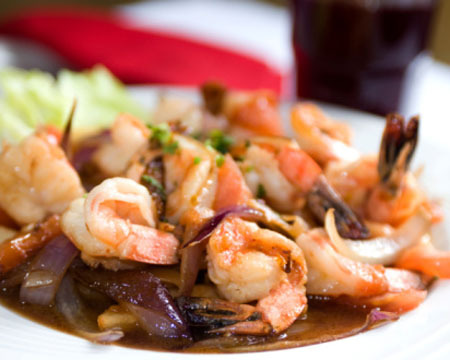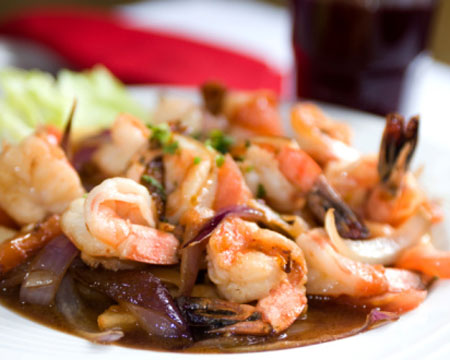10 Things To Know About Peruvian Cuisine
Peruvian cuisine is marked by its diversity — diversity in where it draws its influence from, diversity depending on its region, and even diversity in the crops used to create the dishes. Peru borders the Pacific Ocean on the western front of South America, and so the country's cooking was influenced by many different European, Asian, and African cuisines, which resulted in a worldly culmination of dishes and cooking styles. With so many things to keep track of in this complicated cuisine, we wanted to pare down the gifts of Peru's culinary conquests to create a concise and simple guide to enjoying the exotic fare.
The history of Peru's cuisine dates back to the settlement of the Incan Empire, which gave Peru its staple crops of corn, potatoes and chiles. Throughout the years, several countries began to infiltrate Peru's land, and with them, they brought their culinary styles. Countries such as Spain, China, Italy, West Africa, and
With so many crops, terrain, and cultural influences to cover, here are 10 things that you should definitely know about Peruvian cuisine:
Ceviche — Because of Peru's proximity to the ocean and hence, fresh seafood, ceviche is one of their most well-known dishes, often nominated as the Peruvian National Dish.
Papa Rellena — This dish takes Peru's largest and most versatile crop and puts it to use by offering variations of stuffed potatoes throughout the country.
Yellow Aji Pepper — This pepper is indigenous to the land and you'll often find it in rich and hearty stews. If you're collecting all the basic Peruvian cooking ingredients, this should be on your list.
Sopas — No matter where you go in Peru, you'll find soup on the menu, and it's likely you will never seem the same recipe twice. Consider soups the snowflakes of Peru.
Lomo Saltado — This beef stir-fry dish is the most classic representation of Chinese influence on Peru's cuisine, probably because it's a stir-fry of vinegar, spices, and soy sauce with strips of meat.
Picarones — Picarones are Peru's churros, or as we like to call them, donuts, and are made from squash and sweet potato.
Causa — Just like the papa rellena takes advantage of the abundance of potatoes, the causa uses the many crops available to make cold casseroles of layered ingredients such as potatoes and avocados.
Tiradito — Tiradito is a cross between ceviche and sashimi, and represents the influence of Japanese cuisine in Peru.
Antichuchos — We all know South Americans are known for their grilled beef, and antichuchos is Peru's version. They're often found in the form of thick, hearty pieces of grilled meat served as skewers from street carts.
Cuy — Brace yourself: This meat, which is indigenous to the Andean mountains, is from what we know as guinea pigs, and is a delicacy in Peru.
Anne Dolce is the Cook Editor at The Daily Meal. Follow her on Twitter @anniecdolce

